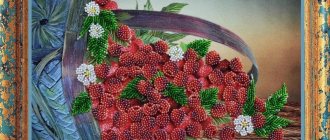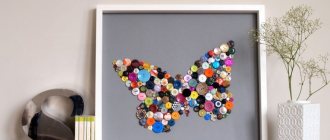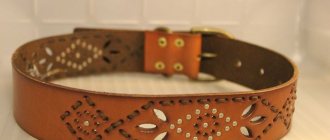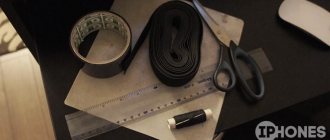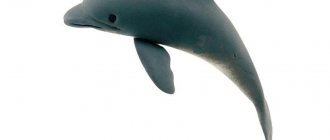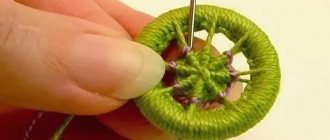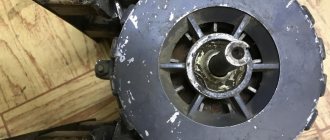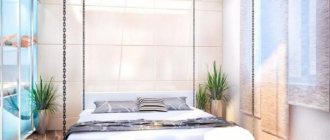Framing the canvas in a baguette will help to highlight the picture. The advantage of using such an element is the attractive appearance of the creation. Buying a ready-made version will be quite expensive, so it makes sense to study the process of making an inexpensive frame for a picture yourself, especially since the appearance of such products will not differ much from those that you can buy in a store. But purchased models do not have the same charm as those made with your own hands at home. In addition to saving money on crafts, this is a great chance to try your hand at hand-made crafts.
How to decide on a baguette option
Use some recommendations when choosing a framing option for a picture and remember that the baguette should be harmoniously combined not only with the product, but also with the entire interior of the room.
What to pay attention to when preparing to make a baguette for a picture with your own hands:
- Combination with the surroundings. Even the most luxurious and expensive framing option does not look so advantageous if it does not match the interior and looks foreign. Here it is important to think over not only the color design, but also the stylistic option. Thus, classic stucco molding is inappropriate in combination with a modern interior, and minimalism is poorly combined with the luxurious design of an office trimmed with wood.
- Color scheme. The perception of the picture largely depends on this factor. Please note that the baguette should be half a tone lighter or darker than the main color of the painting or match one of the shades - not the main one, but quite often found on the canvas. When choosing materials for making a frame for a picture in Moscow, look for those that will match the warm or cold tone prevailing in the design.
- Dimensions. Accuracy is important here, because the perception of the picture depends on the size of the frame. The width of a hand-made baguette for a picture also cannot remain arbitrary. Small paintings are often placed in wide frames. For large ones, only those that look most harmonious are selected, even if they are too narrow. Here everything depends on the situation, and you need to choose a baguette for the picture with a footage suitable for the product.
- Stylistic design. For simple paintings without any frills, it is better to take the same inconspicuous frames so that there is no dissonance with the composition.
From wax crayons
If you have a lot of wax crayons lying around at home and everyone has forgotten about them, feel free to take them out and come up with a picture until you use them all.
Wax crayons differ from paints or markers because they have a soft effect that can be rubbed off with your finger to darken or shade a design. You will need canvas, glue, buds of some favorite flowers and a hairdryer.
To make a picture you will need:
- Glue the crayons to the canvas and warm them thoroughly with a hairdryer. The canvas should be positioned vertically and make sure that it does not move in the opposite direction.
- After the stains caused by the wax crayons have dried, glue the buds, preferably they should be voluminous and lush, to create the desired effect.
- Construct the buds either from paper or fabric at your discretion. Plastic is also great for creating buds, if you know how to make them.
The picture is ready! From a distance, it will differ from ordinary paintings in its brightness and dissimilarity.
If you yourself are an energetic person, then this picture will come in handy and will reflect your nature.
Or just before spring, it is important for all of us to reload and looking at this picture, you will be inspired by the onset of spring and lift your spirits.
Wooden frames
This is a classic solution for framing a picture, used for centuries, so the process has been worked out and no problems should arise during construction. For production, the following options are used:
- A plinth is considered an excellent solution for decorating a baguette for a painting with your own hands, regardless of the composition. This option is unlikely to work for real masterpieces of art, but for home wall paintings, sketches, and panels it will be suitable.
- Platband is a good alternative to plinth, and it is best to choose strips with a width of 50 to 70 mm, which are great for paintings when pretentiousness is not necessary. This solution is optimally suited for a minimalist or modern interior design, where great attention is paid to simplicity and precision of lines.
- A wooden carved baguette is an option that is distinguished by its beauty. Products in this group are distinguished by their skilful finishing. They cost noticeably more than other options, they immediately stand out in appearance, and therefore are worthy of the money.
Types of canvas
Silk, jute, and wool can be used as a basis for painting. These are mainly natural fabrics made from plant materials: flax, cotton, hemp, jute. The most popular types of canvas in modern painting: linen, cotton, synthetics, edging, combined canvas. There are also hemp and jute options. Linen is the most common material for making canvas. The fiber is quite strong and most resistant to external influences compared to other materials.
Linen canvas has a gray-yellow color, good grain of various types, and is divided into several types based on the quality of the threads. Cotton is less durable than linen, easily absorbs moisture, is quite fragile, prone to sagging on the frame, and has a pale yellow color. Beading is a rough, harsh fabric, more suitable for technical or economic use. At the same time, the fabric is fragile and breaks easily. On a painting painted on a beaded canvas, the paint may begin to crack very quickly due to weak thread tension. Also, this fabric often has manufacturing defects in the form of knots and thickening of threads. Nevertheless, it is the border that is very popular among modern painters. Canvas made from synthetic polyester threads is durable, does not respond to changes in the external environment, and has not yet been studied much in the long term. This type is most often used in digital image printing. A very common type of canvas among amateurs today is combined. It consists of natural and artificial fibers. Jute and hemp options have low performance characteristics, however, they are also actively used.
Making a picture into a baguette with your own hands
This process will include several stages. Among them:
- Taking measurements of the composition to have an idea of what size the picture frame will be.
- Parameter accuracy. Depending on the chosen option, before making the workpiece, place the glass outside, this will significantly deepen the depth of the groove, and it is important not to lose sight of this point.
- Cutting workpieces. The easiest way to do this is to use a miter box - a device that allows you to cut elements at a perfectly even angle of 45°, which guarantees perfect joints.
- Connecting parts. The design must be reliable. To achieve this result, use special wood glue, and after it dries, secure the frame with staples using a furniture stapler. The individual parts are fixed using an angle clamp that presses them, ensuring an ideal angle of 90°.
- Apply a layer of decorative coating to the painting baguette: impregnation, paint or varnish, choosing an option that suits the style of your interior.
Manufacturing of frames and other structures
Parts made using the method we discussed above are suitable for solving a huge range of problems. You can decorate a classic hood with them, create a baguette wooden cornice, as well as frames for paintings and photographs and other decorations.
The manufacture of each of these things is based on a general scheme. Let's look at it using the example of creating a picture frame:
- Select a decorative profile of the required size (the larger the perimeter of the work, the wider the frame should be);
- Sand the wooden molding to remove the most noticeable defects;
- Apply markings to the workpieces;
- Cut the strips to the required length, use a miter box to form corner cuts;
- Assemble the frame frame, check the quality of the corners;
- Apply good glue to the ends of the workpieces and press the parts tightly using clamps;
- Secure the corners on the wrong side with several metal staples;
- When the glue has dried, remove the clamps and finish the baguette (sand it with fine-grain sandpaper, coat it with varnish or paint);
- If your product is to be part of a larger structure (such as a hood), mount it on a supporting surface using adhesive or fasteners.
On a note! If you are using a complex profile for your frames, it is very important to trim the corners as accurately as possible. Just in case, leave about a millimeter of wood in reserve, and then adjust the parts by sanding the edge with sandpaper.
What to pay attention to
If you don’t have a corner clamp on your property, use another alternative: make grooves on the joints into which, when gluing the parts, thin elements cut from plywood and coated with glue will be inserted. After drying, the excess parts are cut off, resulting in a smooth product.
Now you know how to make a picture frame with your own hands. There is nothing complicated about this.
Sometimes, during the use of products, minor restoration of the picture frame is required. You can also handle this task yourself. When working with wooden elements, they are first cleaned, puttied and re-painted.
It is more difficult with polyurethane baguettes; they must be thoroughly and systematically cleaned, blowing away dust and avoiding contamination.
MODULAR SUBFRAME PROFILES
The profile of the slats (bars) of the stretcher has a protrusion, the so-called “side”, which ensures minimal contact of the canvas with the stretcher, which is very important for the preservation of the canvas. The cross-section of the subframe slats has different thicknesses, which allows you to select them for the required tasks (for example, for large heavy work you will need slats with a wide cross-section). Among Russian manufacturers, as a rule, there are subframes with the following cross-section:
Among Russian manufacturers, as a rule, there are subframes with the following cross-section:
Lightweight section 40x17 mm. This section is lightweight and has a limitation on the maximum size of the finished subframe: 70x70 cm. Middle strips are not required.
Review of polyurethane foam products
Most purchased options are made from this material, which, unlike expanded polystyrene, is durable and does not crumble, which is why it is better used for work. But, if this option does not suit you, then you can use wood to make a baguette.
In industrial settings, special machines are used for making baguettes, but at home, you can get by with a simple set of tools for framing drawings or compositions drawn on paper, paintings.
Now you know how to work with materials to make picture frames with your own hands, how to make such a product, restore or care for it. All these processes are not complicated, and it is easy to do the work with your own hands without much effort.
From napkins
As mentioned above, napkins can be suitable for different types of needlework; we will consider the option of creating a picture from napkins.
If up to this point you doubted whether or not it was possible to make such a picture, then rest assured that the napkins will look great in your home and give it a special decor and comfort.
Before the onset of spring, this is the most successful option, because spring is associated with warmth, bright spring sun, streams, that is, a warm atmosphere; you will also create an atmosphere of warmth and comfort.
To do this, you will need to remember your drawing skills, because this option requires you to draw a branch on the canvas, you can focus on it, draw a big one or not highlight it. Tear the napkins into pieces, crumple them and glue them to this branch, the picture is ready!
LiveInternetLiveInternet
–Categories
- EMBROIDERY (618)
- 3D embroidery (27)
- smooth surface (25)
- beads (24)
- richelieu (10)
- on knitted fabric (8)
- programs (4)
- magazines, websites (31)
- cross stitch (302)
- ribbons (67)
- miscellaneous (80)
- tips (7)
- lessons (14)
- FOR CARS (21)
- tips (9)
- shops (3)
- MISCELLANEOUS TIPS (1)
- KNITTING (5525)
- flowers (120)
- tops, swimsuits (111)
- dresses, tunics (50)
- miscellaneous (48)
- programs (35)
- beads (15)
- coat (10)
- for the holiday (7)
- trousers, shorts (5)
- hats, scarves, shawls (215)
- children (661)
- for comfort (495)
- animals (18)
- magazines, websites (243)
- lace (432)
- mittens, mittens, socks, slippers (139)
- suits, skirts (475)
- pullovers, sweaters, boleros (637)
- tips (64)
- bags (121)
- fabric + hook (39)
- patterns, motifs (733)
- decorations (65)
- lessons, master class (625)
- fillet knitting (87)
- FOR LOVELY LADIES (117)
- tips (25)
- fashion (14)
- massage (8)
- HOUSEHOLDING (977)
- advice for all occasions (138)
- house plants (103)
- repair (34)
- miscellaneous (16)
- serving (7)
- vegetable garden on the balcony (5)
- equipment (1)
- interior (101)
- tips (132)
- washing (114)
- cleaning, housekeeping (171)
- HEALTH (2166)
- folk recipes (300)
- green pharmacy (95)
- eyes (33)
- animals (1)
- women's (8)
- treat colds (134)
- massage (33)
- calluses (9)
- nerves (7)
- body cleansing (158)
- liver, stomach, intestines (88)
- increase immunity (30)
- weight loss (29)
- kidneys (27)
- miscellaneous (320)
- heart, blood vessels, pressure (165)
- tips (50)
- joints (177)
- exercises (184)
- COSMETICS (1373)
- for hair (165)
- makeup (92)
- for eyes (29)
- for skin (127)
- for face (177)
- for feet (28)
- for hands, nails (61)
- for body (2)
- perfume (1)
- masks (231)
- miscellaneous (37)
- tips (20)
- COOKING (3970)
- meat, poultry (417)
- jam, compotes (54)
- dough (44)
- baked goods (29)
- for Easter (17)
- casseroles (5)
- technology (4)
- dumplings, pancakes (398)
- hot dishes (251)
- magazines, websites (7)
- preservation, preparations for the winter (483)
- drinks (114)
- first courses (44)
- pies, pies (357)
- various recipes (130)
- fish (148)
- salads, snacks (343)
- sweet tooth (113)
- tips (142)
- sauces, dressings (101)
- cakes, pastries, cookies, desserts (523)
- decoration of dishes, cakes (42)
- cold dishes (59)
- MY Cottage (1133)
- trees, shrubs (115)
- root vegetables (41)
- magazines, websites (16)
- grapes (15)
- interior (10)
- parasites, diseases (8)
- ideas (25)
- medicinal plants (3)
- lunar calendar (8)
- cucumbers (51)
- buildings (82)
- miscellaneous (112)
- seedlings (48)
- tips (210)
- tomatoes (81)
- fertilizers, fertilizing, pest control (70)
- flowers (149)
- berry (42)
- WISE (108)
- MISCELLANEOUS INTERESTING (1055)
- interesting (50)
- horoscope, numerology (48)
- for a diary (182)
- zodiac signs (23)
- cinema, video, television (69)
- books (13)
- computer, phone, camera (319)
- music (193)
- tips (5)
- NEEDLEWORK (1823)
- decoupage (20)
- salt dough (11)
- quilling (10)
- miscellaneous by topic (10)
- felting (3)
- macrame (2)
- patchwork (1)
- for comfort (42)
- magazines, websites (43)
- hairpins (3)
- toys (506)
- beads, beads (161)
- made of paper, cardboard (296)
- leather (8)
- made of ribbons, fabric, felt (371)
- made of plastic polymer clay (18)
- from yarn, threads (35)
- soap making (3)
- miscellaneous (111)
- tips (14)
- stencils, ornaments (15)
- decorations (54)
- cold porcelain (26)
- templates (16)
- DIY (6)
- SEWING (1046)
- children (83)
- alterations (25)
- pattern (20)
- animals (12)
- technology (8)
- for women (208)
- for comfort (120)
- magazines, websites (35)
- pillows (46)
- miscellaneous (31)
- tips (35)
- bags (110)
- lessons, master classes (224)
- hats, hats (18)
-Music
–Search by diary
–Subscription by e-mail
-Statistics
A few tips for correctly arranging mirrors
Baguette for a mirror in the interior of a room
I never thought that the correct placement of mirrors is so important for the design and overall perception of the room. Therefore, I myself came across some tips and want to share them with you.
For example, it is better to install large mirrors in the hallway, because they will immediately create the impression of wealth and stability in the family. Black leather framing can be a wonderful way to complement any design, especially when it features leather furniture.
Workflow Description
We will talk about two options for carrying out the work, the first, when the baguette is attached at the junction of the wall and ceiling, and the second, when frames for the panels are constructed from these elements on the wall.
Design of the ceiling joint
As for this option, the installation instructions are as follows:
- First of all, you should clean the surfaces; it is best to glue the wallpaper in advance, firstly, this will make the work process easier, and secondly, you will not need to make the top perfectly flat, since the baguette will still cover at least a few centimeters of space;
- Next, you need to take careful measurements to cut the elements correctly, otherwise the result of the work will not be very attractive, it is best to measure no more than two elements at a time to make sure that they match. After attaching them, two more parts are taken, etc. This way you will proceed from the actual situation, which is much more convenient than cutting material for the entire room and then discovering discrepancies;
- Cutting with a miter box will not cause any difficulties, the only thing worth remembering when choosing this device is that the tooth on the wood hacksaw should be as small as possible, this will ensure the best cleanliness of the cutting;
When cutting, be sure to check how well the elements fit together
- As for gluing, you need to apply the composition either to the elements themselves or to the wall surface, based on what the manufacturer of the composition recommends. Be sure to lubricate the corner joints, since these places must be fastened as firmly as possible, some compounds must be left after application, and some are glued immediately, this nuance also needs to be paid attention to when working;
Important! Since the baguette is most often made of polystyrene foam, if you press it with your fingers, indentations may remain on the surface, which will spoil the appearance; to avoid this, press the elements with the edge of your palm.
- After fixing, the excess glue is immediately wiped off, and the seams can be coated with an acrylic-based sealant, it is easy to paint and sand, and at this point the question of how to glue baguettes to the ceiling and wallpaper can be considered closed.
You also need to tell us how to glue wallpaper onto baguettes, since sometimes there are situations where the elements are already fixed. Everything is simple here: when gluing, take enough material so that it fits onto the element; after careful leveling, the excess part along the joint is cut off with a construction knife for wood.
Liquid nails will help you quickly and reliably glue baguette onto wallpaper.
Wall mount
If you decide to make a panel, the work will be in many ways similar to those described above; we will tell you about the main differences:
- First of all, you should carefully mark the position of the structure on the wall; of course, the ideal option is to attach the baguettes before the wallpaper, but if the coating is durable, you can glue it to it; the weight of the products is light, which allows you not to worry about reliability;
- But you can highlight not only individual areas; one of the options for decorating wallpaper with baguette is a solution using two types of coating, most often a dark bottom and a light top.
Another interesting way to use a baguette
Selecting the material
The first thing you should do is find out in which workshops you can purchase baguettes by the meter, visit them and choose the appropriate option.
Before starting design work, you should choose a baguette, and accordingly, understand what it comes in. Most often in stores, ready-made baguette can be found in three versions.
Polyurethane foam
This is a very light and cheap material that can be easily changed. In addition, it tolerates moisture well, is quite flexible, and will last a long time. An additional plus is that it can be given any shade.
Plastic
Plastic products can imitate wood, have high protection against moisture and are much cheaper than wood. But such material only looks good from afar.
The plastic is noticeable and definitely makes the product in such a frame look cheaper. Also, many consider the unnaturalness of the material to be a disadvantage.
Wooden baguette
The wooden frame is a timeless classic. Let's try to figure out what you can make it from with your own hands:
- Skirting boards are an inexpensive and convenient option for decorating simple compositions. Of course, the plinth is not suitable for luxury products or the style of an expensive interior, but for small sketches and caricatures it is quite convenient. In addition, using it in such an unusual form transforms the product, and it is very difficult to recognize it even without additional decor.
- You can also use platbands 50-70 mm wide to decorate the picture.
- Of course, you can also use a ready-made wooden baguette - this is a more expensive option, but also more beautiful.
Important! Of course, wooden frames look much more luxurious than previous options. They are quite resilient to various types of mechanical damage and are environmentally friendly, but their cost in comparison with plastic and foam products is much higher. Also, such products are afraid of water.
Metal frames
Modern interior design requires the presence of unusual materials. That's why metal frames are also popular today. Most often, such frames are used for presentations, exhibitions or office decoration, but such a product can also look quite organic at home if the design of the room and the picture do not contradict the style of the frame.
Important! For your first frame, it is best to choose inexpensive foam, because even if you ruin the first product, it will not greatly affect your budget.
After selecting the material, you can proceed to design.

